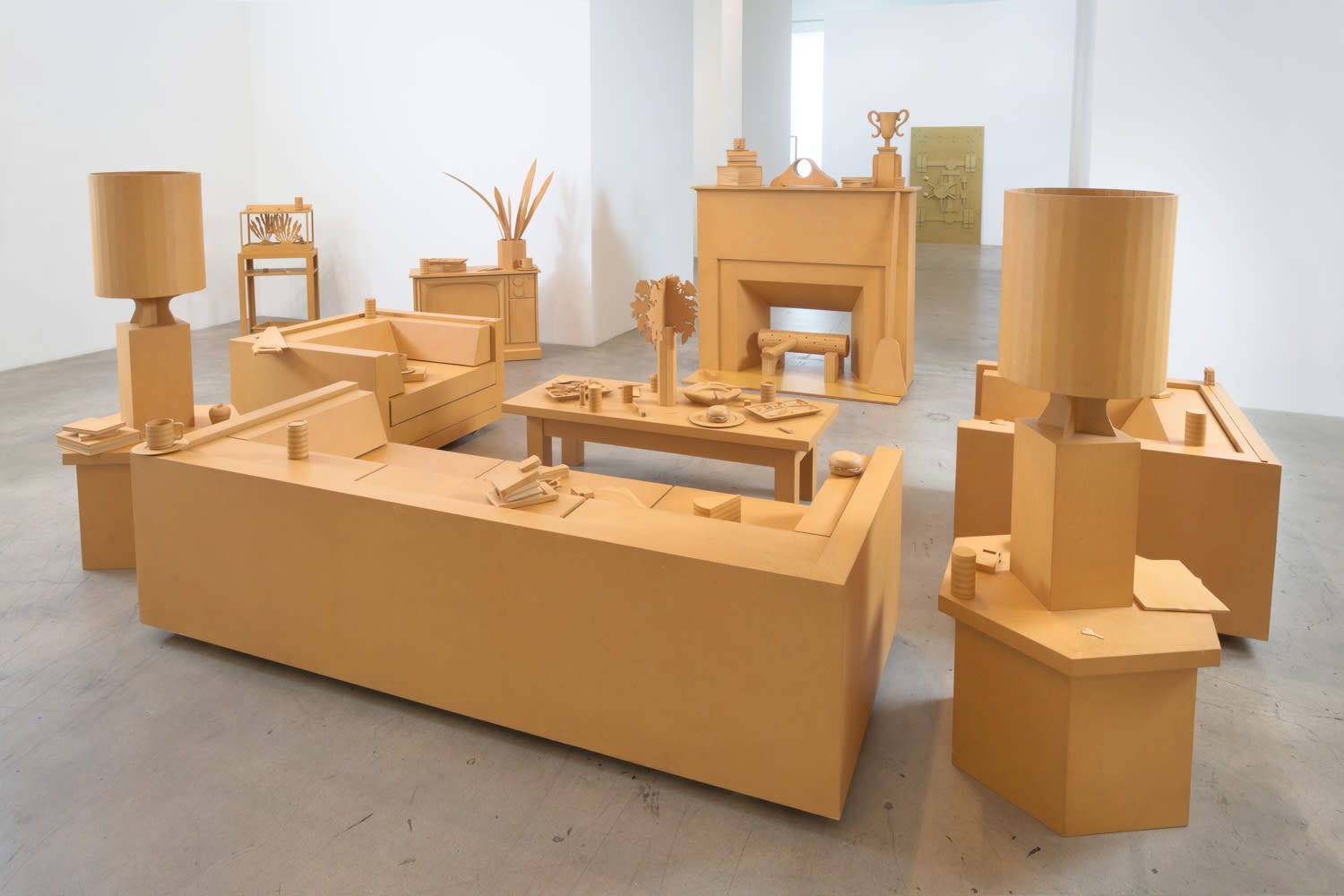Roland Reiss: The Castle of Perseverance (Capsule Review)


[Original publication: No Proscenium, 5/4/21]
Get Laura Hess’s stories in your inbox
Join Medium for free to get updates from this writer.
SubscribeSubscribe
In Hollywood, there’s a living room made entirely of particleboard and it is wonderful.
Roland Reiss: The Castle of Perseverance is a “typical American middle-class living room of the 1970s,” replete with a sofa, fireplace, half-consumed TV dinners, a gun, a fish tank (with fish!), and much more — all in particleboard.
Originally constructed in 1978, the uniformity of this industrial material creates an odd, visceral desire to touch everything; there’s a tactile vibration to the particleboard. Its embodiment is both flat and dynamic. Walking through the installation feels like stepping onto a theatrical stage. The furniture and objects seem temporary, like stand-ins. There’s a tension, a sensation that a rehearsal was interrupted midway through Act II, and now, with the story unfinished, the viewer becomes a type of forensic investigator. The sculpture’s medium adds a surreal layer to this detective work: everything stands out because everything’s the same.
This recreation is offset by a collection of Reiss’ miniatures: plexiglass boxes house corporate figurines, fantastical film sets, and domestic dioramas. The pairing of the life-sized living room and the tiny models was, Reiss wrote, “a chance for me and others to experience the difference between my tableaus and life scale. The miniature is automatically experienced as fictional because the scale is reduced. In life scale, things immediately become real.” Juxtaposed with the miniatures, the cartoonish, two-dimensional look of the living room begets a new suspension of disbelief, one where the viewer experiences a distorted sense of scale; the gallery itself becomes another vitrine, with the viewer adopting the role of a figurine. This vacillation between subject and analyst is a transportive, dreamlike delight.